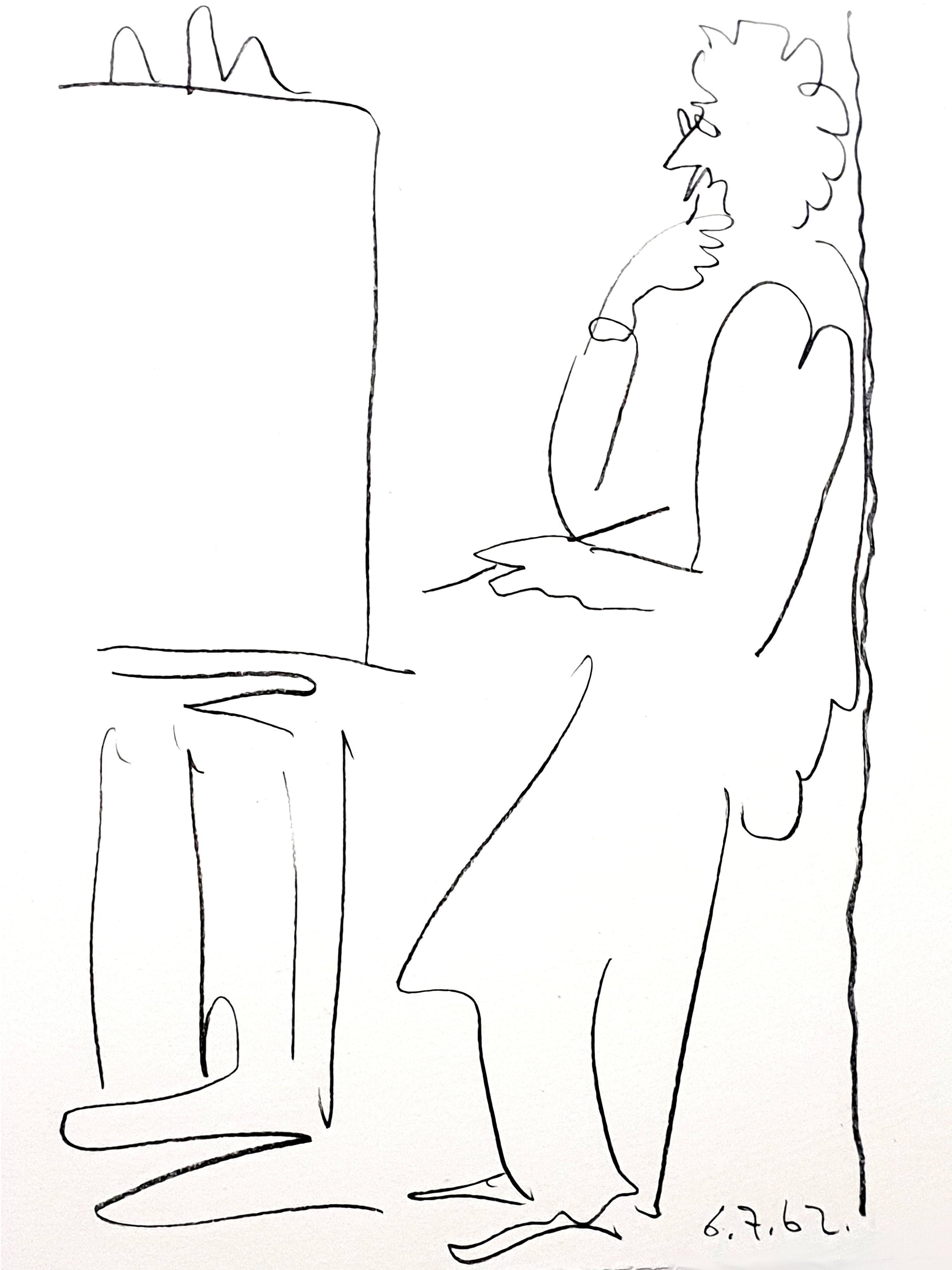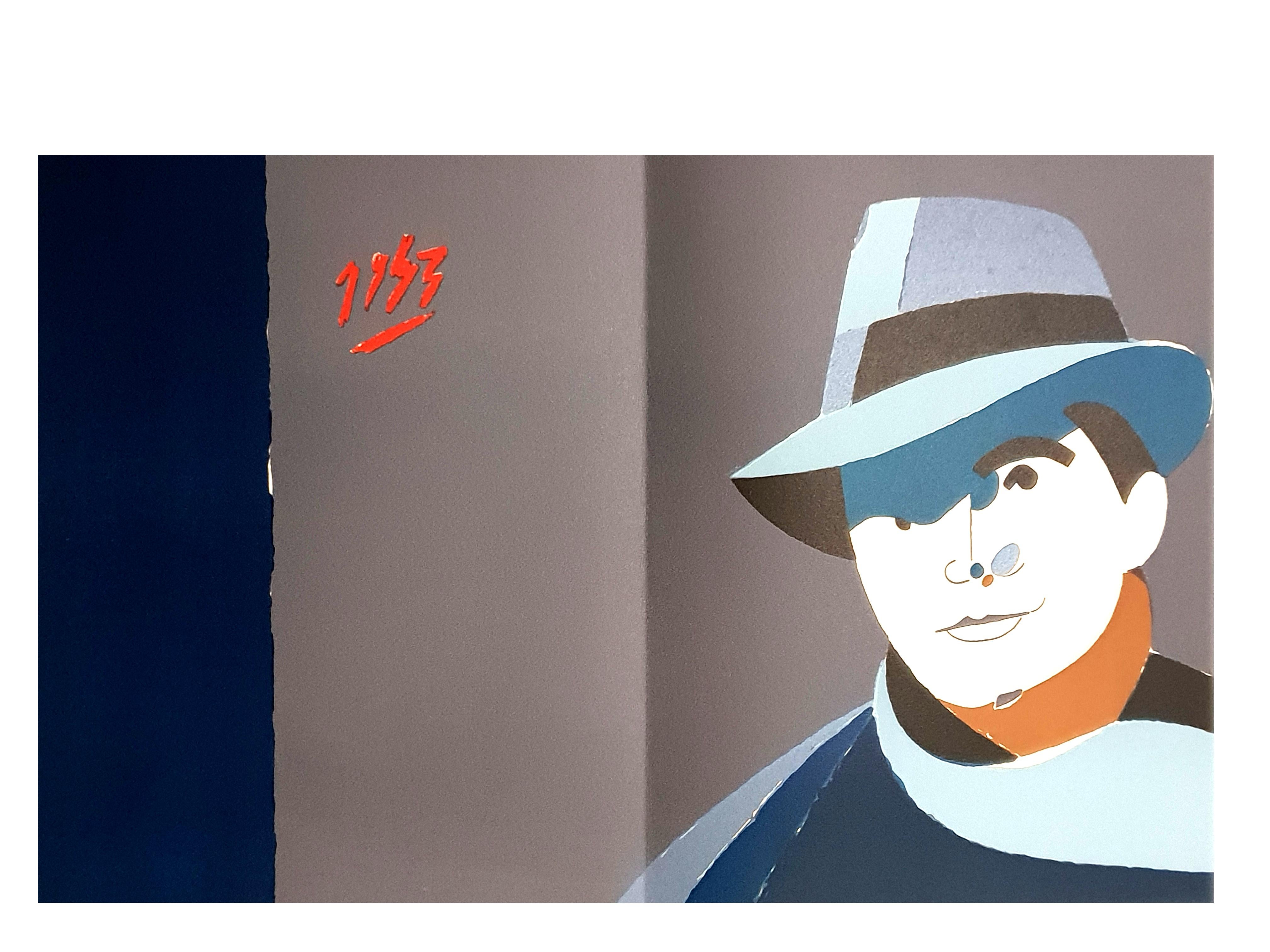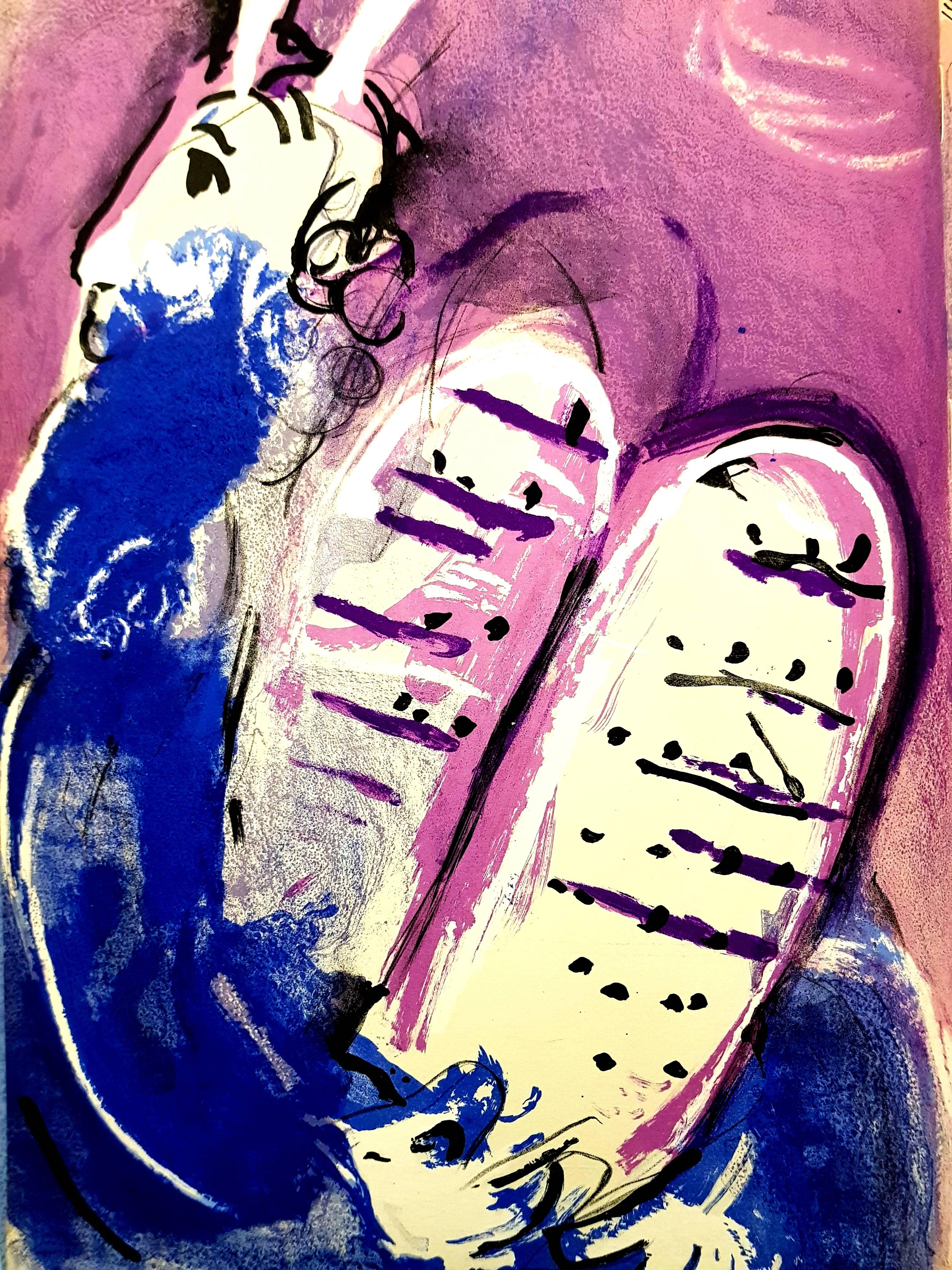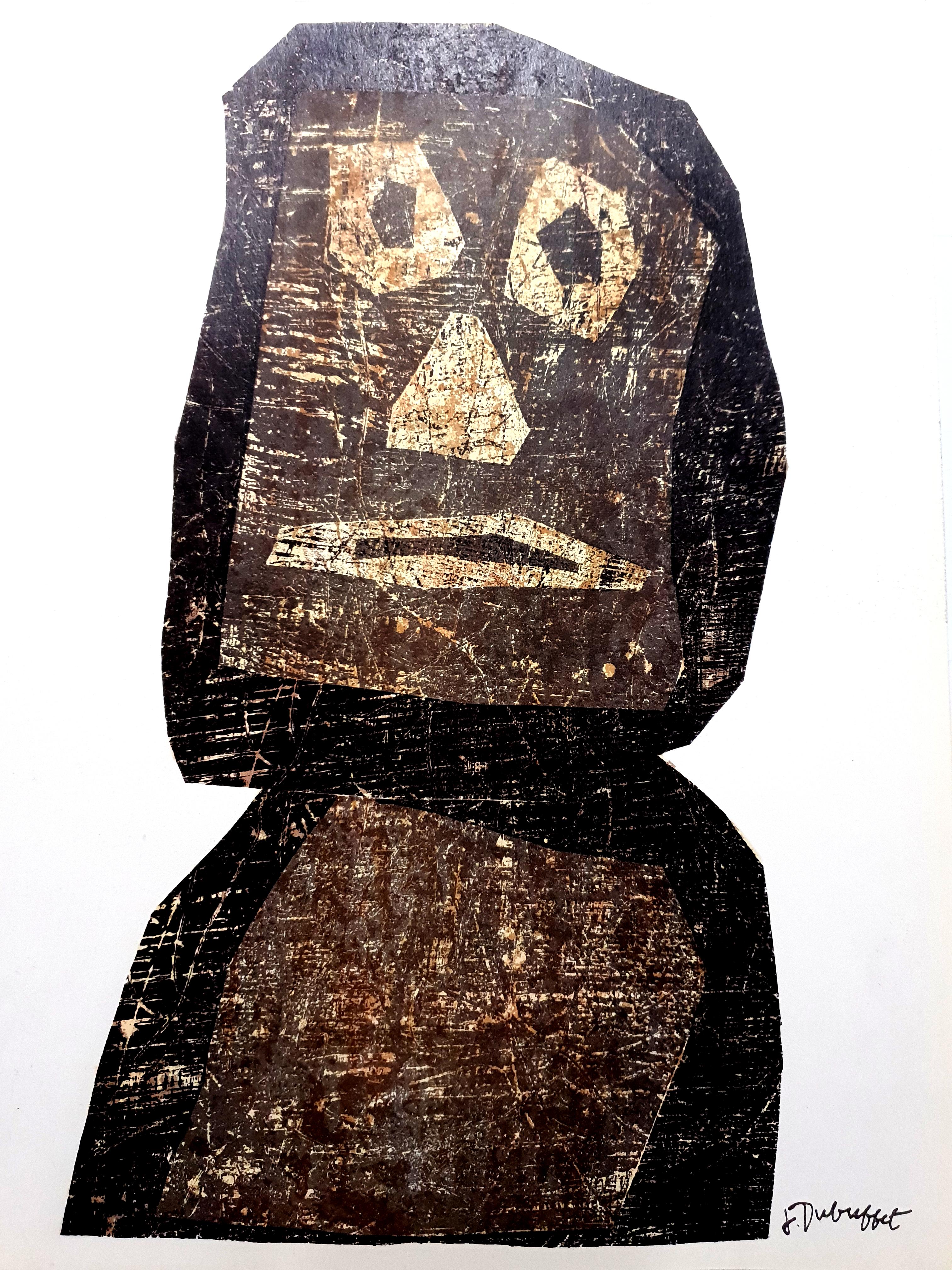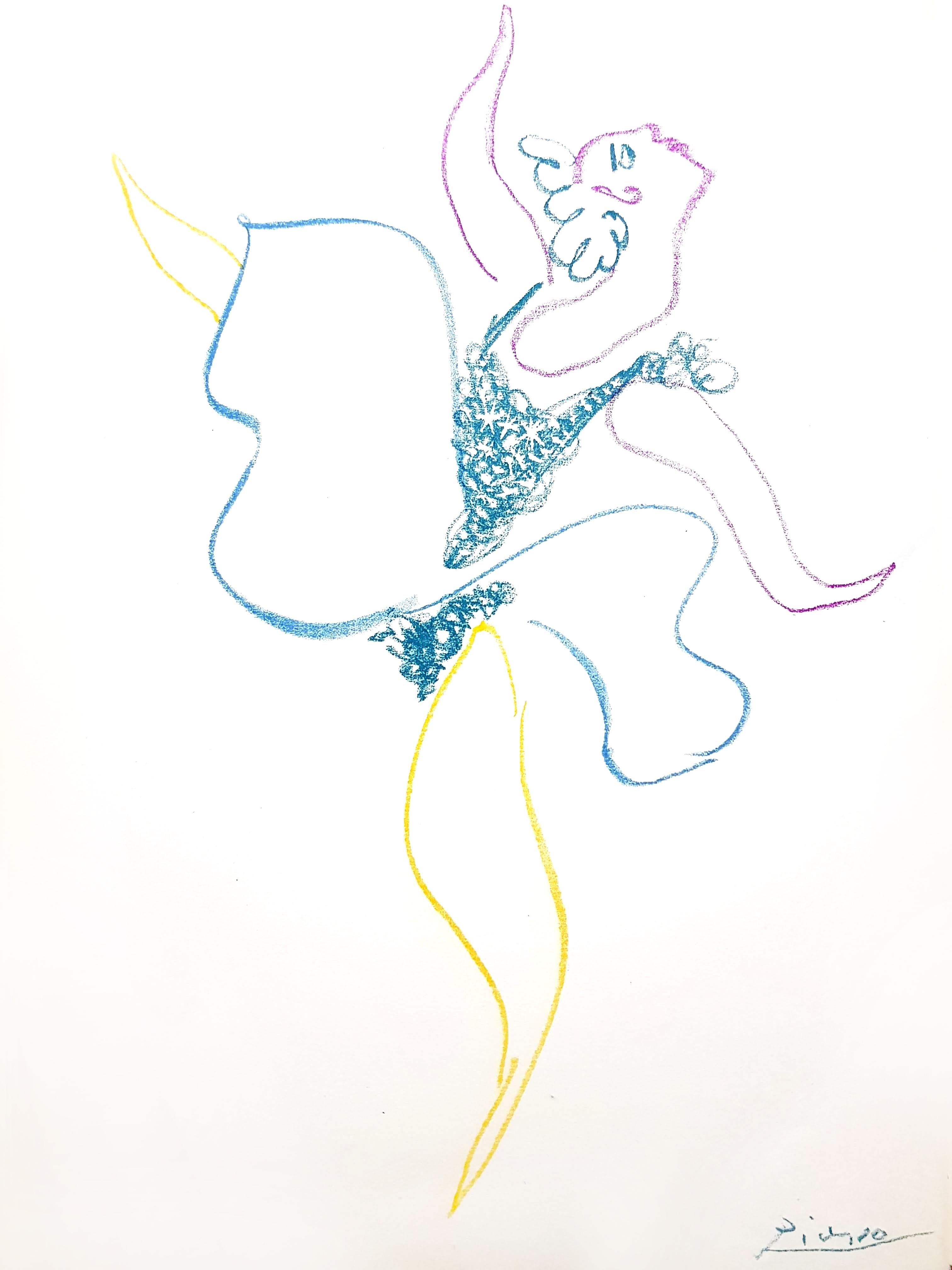Items Similar to British Post Office Greetings Telegrams (1935-1978), after various artists
Want more images or videos?
Request additional images or videos from the seller
1 of 10
UnknownBritish Post Office Greetings Telegrams (1935-1978), after various artists1935-1978
1935-1978
About the Item
British Post Office Greetings Telegrams (1935-1978), after various artists
photolithograph
dimensions, including frames:
33 x Telegram 9 ¾ x 11 ⅞ in. (24.8 x 30.1 cm.)
31 x Telegram 10 ½ x 12 in. (26.8 x 30.5 cm.)
12 x Telegram 11 ½ x 18 in. (29.2 x 45.7 cm.) and similar
12 x Telegram 9 x 11 ½ in. (22.9 x 29.2 cm.)
1 x Telegram 11 ¾ x 12 ¾ in. (29.8 x 32.4 cm.)
1 x Telegram 9 x 10 ⅜ in. (22.9 x 26.3 cm.)
1 x Telegram 8 x 10 ½ in. (20.3 x 26.7 cm.)
A set of ninety-one (91)
The historical equivalent of a text or WhatsApp message, the first telegram was sent in code in 1844 from Washington to Baltimore by Samuel Morse, asking “What hath God wrought?” By 1870 (the year that the British General Post Office nationalised the service), more than 3,000,000 telegrams were being sent annually, of which one of the shortest ever was from Oscar Wilde, who, enquiring as to sales for his new book, sent a solitary “?” to his publisher. The response was “!”.
To harness new commercial appeal, the Greetings Telegram was introduced in 1935. Costing three pence more than a standard telegram, the initiative was a great success, and nearly 25,000 were sent out in the first week.
In 1943, during the Second World War, production of the Greetings Telegram was halted due to paper rationing and exigencies. Upon its reintroduction in 1950, demand was on a steep decline due to the increasing popularity of the telephone, and also the negative association that the telegram had acquired through informing families that their loved ones had been killed or were missing in action. The final British Greetings Telegram was produced in 1978, and the overall service came to an end in the United Kingdom in 1982.
As the present collection illustrates, Greetings Telegrams were extremely popular for celebrating special events: from newborn babies to weddings; from Christmas and coronations to Valentine’s day. Indeed, more than 50,000 of Rex Whistler’s Valentine’s design of 1936 were dispatched. The Greetings Telegram was a great way for artists to increase their profile and reach an incredibly broad audience, combining - in a very Warholian manner - mass production, consumerism and art. The artists featured in this collection include Edward Ardizzone, Rex Whistler and John Strickland Goodall. However, the first Greetings Telegram was designed by Mrs Calkin James, a Post Office employee.
PLEASE NOTE THAT ONLY A SMALL SELECTION OF THE GREETINGS TELEGRAMS HAVE BEEN ILLUSTRATED.
For a comprehensive listing of the artists, complete illustrations, and further information about the Telegrams, please view my online catalogue.
- Creation Year:1935-1978
- Dimensions:Height: 11 in (27.94 cm)Width: 18 in (45.72 cm)
- Medium:
- Movement & Style:
- Period:
- Condition:
- Gallery Location:London, GB
- Reference Number:1stDibs: LU80612354153
About the Seller
5.0
Vetted Seller
These experienced sellers undergo a comprehensive evaluation by our team of in-house experts.
Established in 2016
1stDibs seller since 2017
26 sales on 1stDibs
Typical response time: <1 hour
- ShippingRetrieving quote...Ships From: London, United Kingdom
- Return PolicyA return for this item may be initiated within 14 days of delivery.
More From This SellerView All
- The hand of vitalityLocated in London, GBdated, inscribed and signed ‘1987/ The Hand/ of/ Vitality/ Deborah/ Schneedbeli/ Morrell’ (on the reverse) bodycolour, card and paper mache 18 ⅞ x 12 ¾ in. (4...Category
1980s Modern Figurative Sculptures
MaterialsGouache, Papier Mâché
- The artist’s museLocated in London, GBPresented in a hand-made 18th Century ebonised frame.Category
1930s Realist Nude Paintings
MaterialsChalk
- VenusBy Richard WestallLocated in London, GBRichard Westall, R.A. (1765-1836) Venus signed and dated ‘R. Westall 1794’ (lower right) pencil and watercolour, with white heightening image 11 ⅞ x 15 ¼ in. (30.2 x 38.7 cm.) frame ...Category
1790s Romantic Figurative Drawings and Watercolors
MaterialsWatercolor
- HoneycombBy Tom RoothLocated in London, GB'Honeycomb' was created by Tom Rooth in the Cambrian Mountains of Wales, where Tom lives off-grid. Each ceramic Honeycomb panel has been handmade, drawn, glazed and fired in the Cambrian Mountains of Wales. The frames are also handmade, and have been gessoed, painted and gilded with 23.5 carat gold - the purest gold you can use for gilding. It is possible to display your Honeycomb as individually framed panels, or en masse - the photograph, taken at The Treasure House...Category
2010s Realist Mixed Media
MaterialsCeramic, Glaze, Pencil
- The Fashion Parade - 20 century animal painting by Charles Frederick TunnicliffeBy Charles Frederick TunnicliffeLocated in London, GBCharles Frederick Tunnicliffe, R.A. (1901-1979) The fashion parade signed ‘CF Tunnicliffe’ (lower right) oil on canvas 25 ⅛ x 30 ¼ in. (63.8 x 76.8 cm.) frame 30 ⅞ x 36 in. (78.4 x 9...Category
Mid-20th Century Post-War Animal Paintings
MaterialsCanvas, Oil
- Portrait of an AfricanBy Middleton JamesonLocated in London, GBsigned with initials ‘M.J.’ (lower right) oil on canvas 14 x 12 in. (35.6 x 30.5 cm.) with frame 20 x 18 in. (50.8 x 45.7 cm.) In the artist's original Watts-style frame. Born in E...Category
Late 19th Century Realist Nude Paintings
MaterialsCanvas, Oil
You May Also Like
- Pablo Picasso - The Painter - Original LithographBy Pablo PicassoLocated in Collonge Bellerive, Geneve, CHPablo Picasso - Original Lithograph Title: Painter and his Model From the illustrated book "Regards sur Paris" (Paris: André Sauret, 1962) Edition of 180 Individual prints were not s...Category
1960s Modern Portrait Prints
MaterialsLithograph
- Eduardo Arroyo - Jean Moulin - Original LithographBy Eduardo ArroyoLocated in Collonge Bellerive, Geneve, CHEduardo Arroyo - Jean Moulin - Original Lithograph 1984 Conditions: excellent Edition: 495 Dimensions: 37,3 x 58 cm Editions: TrinckvelCategory
1980s Modern Landscape Prints
MaterialsLithograph
- Marc Chagall - Moses with Tablets of Stone - Original LithographBy Marc ChagallLocated in Collonge Bellerive, Geneve, CHMarc Chagall, Original Lithograph depicting an instant of the Bible. Technique: Original lithograph in colours Year: 1956 Sizes: 35,5 x 26 cm / 14" x 10.2" (sheet) Published by: Éditions de la Revue Verve, Tériade, Paris Printed by: Atelier Mourlot, Paris Documentation / References: Mourlot, F., Chagall Lithograph [II] 1957-1962, A. Sauret, Monte Carlo 1963, nos. 234 and 257 Marc Chagall (born in 1887) Marc Chagall was born in Belarus in 1887 and developed an early interest in art. After studying painting, in 1907 he left Russia for Paris, where he lived in an artist colony on the city’s outskirts. Fusing his own personal, dreamlike imagery with hints of the fauvism and cubism popular in France at the time, Chagall created his most lasting work—including I and the Village (1911)—some of which would be featured in the Salon des Indépendants exhibitions. After returning to Vitebsk for a visit in 1914, the outbreak of WWI trapped Chagall in Russia. He returned to France in 1923 but was forced to flee the country and Nazi persecution during WWII. Finding asylum in the U.S., Chagall became involved in set and costume design before returning to France in 1948. In his later years, he experimented with new art forms and was commissioned to produce numerous large-scale works. Chagall died in St.-Paul-de-Vence in 1985. The Village Marc Chagall was born in a small Hassidic community on the outskirts of Vitebsk, Belarus, on July 7, 1887. His father was a fishmonger, and his mother ran a small sundries shop in the village. As a child, Chagall attended the Jewish elementary school, where he studied Hebrew and the Bible, before later attending the Russian public school. He began to learn the fundamentals of drawing during this time, but perhaps more importantly, he absorbed the world around him, storing away the imagery and themes that would feature largely in most of his later work. At age 19 Chagall enrolled at a private, all-Jewish art school and began his formal education in painting, studying briefly with portrait artist Yehuda Pen. However, he left the school after several months, moving to St. Petersburg in 1907 to study at the Imperial Society for the Protection of Fine Arts. The following year, he enrolled at the Svanseva School, studying with set designer Léon Bakst, whose work had been featured in Sergei Diaghilev's Ballets Russes. This early experience would prove important to Chagall’s later career as well. Despite this formal instruction, and the widespread popularity of realism in Russia at the time, Chagall was already establishing his own personal style, which featured a more dreamlike unreality and the people, places and imagery that were close to his heart. Some examples from this period are his Window Vitebsk (1908) and My Fianceé with Black Gloves (1909), which pictured Bella Rosenfeld, to whom he had recently become engaged. The Beehive Despite his romance with Bella, in 1911 an allowance from Russian parliament member and art patron Maxim Binaver enabled Chagall to move to Paris, France. After settling briefly in the Montparnasse neighborhood, Chagall moved further afield to an artist colony known as La Ruche (“The Beehive”), where he began to work side by side with abstract painters such as Amedeo Modigliani and Fernand Léger as well as the avant-garde poet Guillaume Apollinaire. At their urging, and under the influence of the wildly popular fauvism and cubism, Chagall lightened his palette and pushed his style ever further from reality. I and the Village (1911) and Homage to Apollinaire (1912) are among his early Parisian works, widely considered to be his most successful and representative period. Though his work stood stylistically apart from his cubist contemporaries, from 1912 to 1914 Chagall exhibited several paintings at the annual Salon des Indépendants exhibition, where works by the likes of Juan Gris, Marcel Duchamp and Robert Delaunay were causing a stir in the Paris art world. Chagall’s popularity began to spread beyond La Ruche, and in May 1914 he traveled to Berlin to help organize his first solo exhibition, at Der Sturm Gallery. Chagall remained in the city until the highly acclaimed show opened that June. He then returned to Vitebsk, unaware of the fateful events to come. War, Peace and Revolution In August 1914 the outbreak of World War I precluded Chagall’s plans to return to Paris. The conflict did little to stem the flow of his creative output, however, instead merely giving him direct access to the childhood scenes so essential to his work, as seen in paintings such as Jew in Green (1914) and Over Vitebsk (1914). His paintings from this period also occasionally featured images of the war’s impact on the region, as with Wounded Soldier (1914) and Marching (1915). But despite the hardships of life during wartime, this would also prove to be a joyful period for Chagall. In July 1915 he married Bella, and she gave birth to a daughter, Ida, the following year. Their appearance in works such as Birthday (1915), Bella and Ida by the Window (1917) and several of his “Lovers” paintings give a glimpse of the island of domestic bliss that was Chagall’s amidst the chaos. To avoid military service and stay with his new family, Chagall took a position as a clerk in the Ministry of War Economy in St. Petersburg. While there he began work on his autobiography and also immersed himself in the local art scene, befriending novelist Boris Pasternak, among others. He also exhibited his work in the city and soon gained considerable recognition. That notoriety would prove important in the aftermath of the 1917 Russian Revolution when he was appointed as the Commissar of Fine Arts in Vitebsk. In his new post, Chagall undertook various projects in the region, including the 1919 founding of the Academy of the Arts. Despite these endeavors, differences among his colleagues eventually disillusioned Chagall. In 1920 he relinquished his position and moved his family to Moscow, the post-revolution capital of Russia. In Moscow, Chagall was soon commissioned to create sets and costumes for various productions at the Moscow State Yiddish...Category
1950s Modern Figurative Prints
MaterialsLithograph
- Jean Dubuffet - original lithograph from XXe Siecle magazineBy Jean DubuffetLocated in Collonge Bellerive, Geneve, CHJean Dubuffet - Original Lithograph from XXe Siecle magazine 1958 Dimensions: 32 x 25 cm Edition: G. di San Lazzaro. Unsigned and unumbered as issuedCategory
1960s Modern Figurative Prints
MaterialsLithograph
- Pablo Picasso - The Ballet Dancer - Original LithographBy Pablo PicassoLocated in Collonge Bellerive, Geneve, CHPablo Picasso - Original Lithograph Title: The Ballet Dancer Dimensions: 32 x 24 cm 1954 Reference: Bloch 767 Frontispiece for the book "Le Ballet" (Paris: Editions Hachet, 1954) by...Category
1950s Modern Portrait Prints
MaterialsLithograph
- Jean Cocteau - Angel - Original Handcolored LithographBy Jean CocteauLocated in Collonge Bellerive, Geneve, CHJean Cocteau - Angel - Original Handcolored Lithograph Signed in the plate Stampsigned Handcolored in pencil. Edition : /XXV Dimensions: 47.5 x...Category
1950s Modern More Prints
MaterialsLithograph
Recently Viewed
View AllMore Ways To Browse
Post Office
Office 1978
Final Post
Vintage Christmas Prints
Vintage Baltimore Prints
Vintage Christmas Art Prints
British World War 1
Oscar Wilde
Christmas Lithograph
Whistler Lithograph
Christmas Vintage Illustration
Vintage Christmas Illustrations
Vintage Valentine Prints
Coronation Year
18 Whistle
James Whistler Lithograph
Vintage Baby Illustrations
Vintage Baby Illustration
